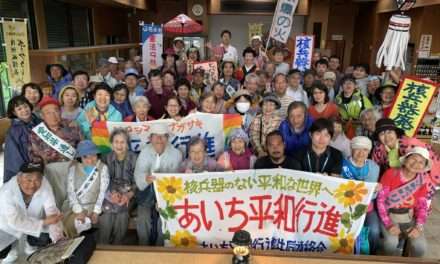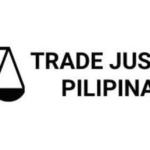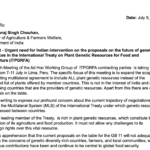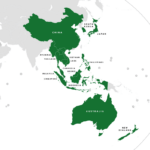The last time the International Monetary Fund (IMF) was active in Thailand was in the mid-1980’s, when the country was mired in a recession caused by the conjunction of the rising price of oil, plunging prices of agricultural exports, onerous servicing of the foreign debt, and a crisis in the economy’s external accounts. The IMF put Thailand on a stabilization program that was coordinated with a more strategic structural adjustment program managed by the World Bank.
The goal of the IMF’s and the World Bank’s efforts was not simply to stabilize the country’s external accounts but to drastically reorient the country away from inward, import-substituting industrialization towards greater integration into the world market via trade and financial liberalization, deregulation, and privatization.
At around the same time, a similar regime was being imposed by the World Bank on Indonesia, which was then undergoing a similar balance of payments crisis cum recession. Malaysia, also in deep economic trouble, chose not to go to the Fund or the Bank but to impose its own structural adjustment program. The Philippines, caught in the vise of recession and political revolution, was practically under receivership and micromanaged by the IMF and the Bank.
Structural Adjustment Stalls
A greater export orientation was the legacy of this period under the surveillance of the Bretton Woods institutions. But the structural adjustment of the Indonesian, Thai, and Malaysian econmies was quite limited, in the view of Bank and Fund technocrats, with the domestic market continuing to enjoy signficant protection, government regulation of economic activity remaining substantial, and state enterprises continuing to play a significant role in production.
What derailed these programs was the massive inflow of Japanese direct investment into the region triggered by the Plaza Accord of 1985. The drastic appreciation of the yen relative to the dollar sent Japanese firms on a decade-long mass migration to cheap labor sites in Southeast Asia and China to retain their competitiveness in export markets. Japanese investments in the form of physical plant and technology flowed massively into the region, with some estimates putting the total inflow at some $15 billion between 1985 and 1990.
One consequence of this momentous development was that in Indonesia, Malaysia, and Thailand, government and business elites realized that they could get foreign capital–substantial quantities of it, in fact–without having to undergo significant free-market reform, as their handlers at the World Bank and the Fund had advised them.
Thus structural adjustment programs ground to a halt. Government enterprises continued to be the most significant economic actors in Indonesia’s system of production. Malaysia practically halted the privatization of its state enterprises and continued its experiments in the state enterprise-foreign investor joint venture exemplified by the Proton Corporation that turns out the popular Saga. And in Thailand, instead of dismantling protectionist barriers, government planners pushed the economy into a “second stage of import substitution,” with the emphasis on using high tariffs to encourage the emergence and growth of intermediate and capital goods industries.
Not only was protection compatible with growth, in the view of many Southeast Asian technocrats, but it seemed that a judicious protectionist policy actually promoted growth. In the case of Thailand, for instance, a protected domestic market for automobiles invited massive job-creating investment by Toyota, Mitsubishi, and Nissan, who were eager to skirt the tariff walls against completely built up units (CBU’s) by assembling cars in-country.
While it was politic for Southeast Asian economic managers to recite the free market mantra when in the company of IMF, World Bank, and US officials, they were, in fact, a highly pragmatic, non-doctrinaire bunch that based policy on what worked or appeared to work.
The Philippine Tragedy
While noting the apparent correlation or compatibility between protection and prosperity in Malaysia, Thailand, and Indonesia, Southeast Asian technocrats looked askance at the Philippines, where Asia’s most radical structural adjustment program was underway. To them, the real tragedy of the Philippines did not stem from its longstanding protectionist structure, as their IMF and Bank colleagues wanted them to believe, but lay in the fact that its political instability had scared off signficant Japanese direct investment, leaving the country with no leverage vis-a-vis the Fund and the Bank.
This analysis is supported by a detailed look at the process of structural adjustment as it unfolded over the last decade and a half.
Completely dependent on Fund and Bank approval to be given entry into world capital markets, the Philippines had no choice but to comply with the prescriptions of the two institutions. The result was, as in Latin America, a decade of virtually zero or minimal growth between 1983 and 1993.
In the first phase of structural adjustment, 1980 to around 1984, the focus was on trade liberalization. The average rate of protection for agricultural and manufacturing products was brought down by a third or more, and import restrictions were lifted on two-thirds of some 3000 items targetted before the combination of deep economic crisis and political crisis of the last years of the Marcos dictatorship forced a suspension of the six-year program.
The second phase of structural adjustment, which lasted from 1984 to the end of the administration of President Cory Aquino in 1992, saw the IMF and the Bank put the emphasis on the Philippines faithfully servicing its $26 billion debt, owing to the vociferous demands of the country’s commercial bank debtors. Most of the 15 structural adjustment and stabilization loans received by the country from the Fund and the Bank during this period were immediately redirected as interest payments to US, Japanese, and European creditor banks. Some 50 per cent of the government budget was devoted to debt servicing, which by the late eighties amounted to about 7-10 per cent of the country’s gross domestic product per annum.
In effect, debt repayment became the prime objective of national policy, and it is not surprising that the hemorrhage of financial resources coupled with the recessionary effects of deep cutbacks in government expenditures and the constant devaluation of the peso mandated by the structural adjustment doctrine created a decade of stagnation.
Growth Versus Debt Repayment
Growth versus onerous debt repayment became the national debate in technocratic circles throughout the Aquino period. Pro-growth technocrats at the National Economic Development Authority (NEDA) produced convincing evidence that a respectable growth rate of 6.5 per cent that would contain the spread of poverty would demand a two-year debt moratorium and selective debt repudiation. But they were overruled by President Aquino, who preferred the “model debtor” strategy advocated by the pro-IMF technocrats ensconced in the Department of Finance.
By the end of the Aquino administration, the Philippines had been left far behind by its ASEAN neighbors. Though their economies were roughly the same size in the mid-seventies, Thailand’s economy was nearly twice, in GDP terms, the size of the Philippines,’ by 1992. In the period 1980-93, the Philippines’ growth rate averaged 1.4 per cent per annum, compared to 8.2 per cent for Thailand, 5.8 per cent for Indonesia, and 6.2 per cent for Malaysia.
Accelerating Liberalization
The third phase of structural adjustment, which began with President Fidel Ramos’ assumption of office in 1992, was marked by the acceleration of deregulation, trade and investment liberalization, and privatization. Profitable government enterprises like the oil-refining and marketing firm Petron, considered the crown jewel of the state sector, were handed over to the private sector, as were some vital services like managing the water supply. Using Chile as a model, the government is in the process of reducing tariffs on all products (except sensitive agricultural commodities like rice) to a uniform five per cent by 2004, not only for ASEAN countries but for all trading partners. The banking and insurance sectors have been opened up to foreign enterprises, while the nationality restrictions in the foreign investment code have been loosened up considerably, with the government determined to open up even retail trade to foreign firms.
Was Adjustment Worth It?
With the exception of Singapore, the Philippines is today probably the most free-market oriented among ASEAN’s economies and its technocrats are certainly the most doctrinaire free marketeers. Many ordinary Filipinos, however, question whether the pain, crisis, and stagnation that marked most of the last 15 years were worth it, especially since the new “streamlined” economy still has to really deliver.
True, the economy has experienced 5-6 per cent growth rates over the last three years, but this has been driven mainly by foreign capital-fueled hothouse activity in the construction sector and in services rather than by dynamism in the really productive areas of agriculture and manufacturing, which are in really bad shape owing to the flood of cheap foreign manufactures and cheap, subsidized US grain triggered by the liberalization program.
Moreover, the debt problem, which the structural adjustment program was supposed to decisively resolve, remains a massive burden. The foreign debt has climbed from $26 billion in the mid-eighties to $40.2 billion, with debt service payments coming to 7 per cent of GDP–a ratio higher than Thailand’s.
As Thais await the unfolding of the IMF program, it would be good to steel themselves by looking closely at the Philippines’ experience. For presented with a second chance by Thailand’s economic crisis, it is almost certain that the Fund and the Bank will not be satisfied with imposing a short-term stabilization program but will try to complete the structural adjustment process that was derailed by the cornucopia of Japanese investment in the late eighties.
With the Indonesian and Malaysian economies also entering into crisis and about to call the IMF and World Bank for help, the Fund is likely not to miss the opportunity to complete structural adjustment of those economies as well.
*Dr. Walden Bello, a contributing editor of the Nation, is co-director of Focus on the Global South, a program of policy research, analysis, and action of the Chulalongkorn University Socia Research Institute (CUSRI). A professor of sociology and public administration at the University of the Philippines, he is the author of several books on development, including Dark Victory: the United States, Structural Adjustment, and Global Poverty (London: Pluto, 1994).








